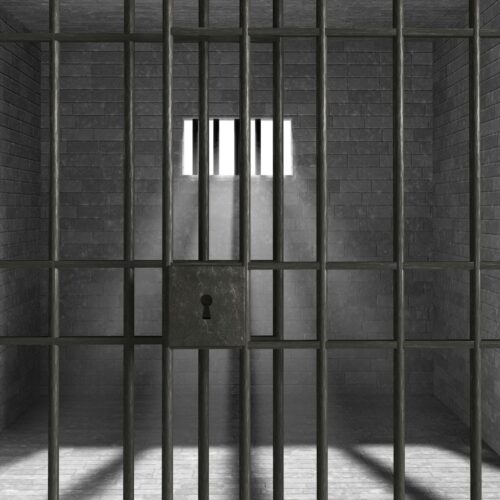
Nebraska, Washington Leaders Examine Proposals to Reform State Justice Systems
The Council of State Governments (CSG) Justice Center delivered separate reports to Nebraska and Washington last month outlining potential policy changes as state government leaders consider making significant changes to their criminal justice systems.
In Washington, Gov. Jay Inslee and a bipartisan group of state legislators unveiled a comprehensive proposal to reduce the state’s high rate of property crime, hold offenders more accountable on supervision, and avert growth in the state’s prison population.
The broad taskforce of legislators, state agencies, public safety officials, and stakeholders endorsed a policy framework in December to reduce property crime, deter recidivism, and provide property offenders with supervision and treatment. The full report outlines these analyses and findings that resulted from the justice reinvestment process.
“We are always looking for ways to make sure we’re making best use of our public safety dollars. Over the last seven months, a taskforce comprised of legislators and stakeholder representatives from around the state convened to examine our state criminal justice data and identify strategies to be more effective at reducing crime,” Inslee said. “The taskforce found that our biggest opportunity is tackling the unacceptably high amount of property crime in Washington. Through implementation of these proposed reforms, we would reduce the state’s high property crime rate, strengthen law enforcement and supervision to hold offenders accountable, and save our state millions of dollars every year in future corrections costs.”
The proposal sets a goal for the state of reducing property crime 15 percent by 2021. In 2013, Washington had the highest property crime rate in the nation.
In Nebraska, policy options outlined in the report would reduce the number of people leaving prison without supervision by 70 percent. If executed, the recommendations could also avoid spending $306.4 million in corrections costs over the next five years, while reinvesting $32.8 million in recidivism-reduction strategies.
Nebraska prisons currently house more than one-and-a-half times as many men and women as they were designed for, and, if nothing is done, will become even more crowded and costly in the years to come. The prison population is currently projected to swell from 5,221 people (159 percent of capacity) at the close of 2014 to 5,581 people (170 percent of capacity) by FY2020. The Nebraska Department of Correctional Services has set forward a proposal for spending $261.6 million to build enough prison beds to bring state prisons down to 128 percent of capacity by FY2019. No construction has been funded or scheduled, however, and the proposal would not impact the growing prison population or curb crime.
More than 50 senators, legislative staff, and criminal justice stakeholders packed into a room in the Nebraska State Capitol for the briefing from CSG Justice Center staff, with opening remarks from state Sens. Les Seiler, Judiciary Committee chair; Bob Krist, Executive Board chair; and Heath Mello, Appropriations Committee chair. The three senators were members of the Justice Reinvestment Working Group, which developed the 15 policy recommendations discussed during the briefing and described in the CSG Justice Center’s report released during the event, titled “Justice Reinvestment in Nebraska: Analysis and Policy Framework.”
“This report provides an outline for how the state could improve our corrections system and address the need to reduce prison overcrowding,” said Sen. Seiler. “The legislature must immediately address developing legislation this session based on the findings of this report and others before the legislature and the input of all stakeholders across the criminal justice system.”
This project was supported by Grant No. 2013-ZB-BX-K002 awarded by the Bureau of Justice Assistance. The Bureau of Justice Assistance is a component of the Department of Justice’s Office of Justice Programs, which also includes the Bureau of Justice Statistics, the National Institute of Justice, the Office of Juvenile Justice and Delinquency Prevention, the Office for Victims of Crime, and the SMART Office. Points of view or opinions in this document are those of the author and do not necessarily represent the official position or policies of the U.S. Department of Justice.
 Vermont Executive Working Group Hears Recommendations on How to Improve Domestic Violence Responses
Read More
Vermont Executive Working Group Hears Recommendations on How to Improve Domestic Violence Responses
Read More
 New Hampshire Governor’s Commission Reviews Justice Reinvestment Initiative Data Analysis and Proposed Policy Recommendations
New Hampshire Governor’s Commission Reviews Justice Reinvestment Initiative Data Analysis and Proposed Policy Recommendations
On April 6, 2023, the New Hampshire Governor’s Advisory Commission on Mental…
Read More Explainer: Minnesota’s Justice Reinvestment Legislation Results in $43.6 Million Annual Increase in Community Supervision System
Read More
Explainer: Minnesota’s Justice Reinvestment Legislation Results in $43.6 Million Annual Increase in Community Supervision System
Read More
 Biden Signs Six-Bill Spending Package Funding Key Criminal Justice Programs
Biden Signs Six-Bill Spending Package Funding Key Criminal Justice Programs
On March 9, 2024, President Joe Biden signed a $460 billion spending…
Read More











